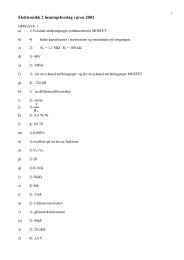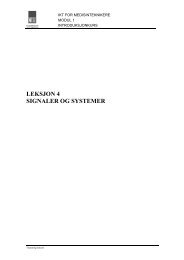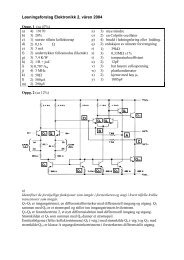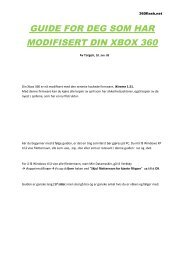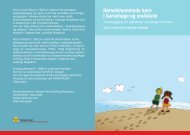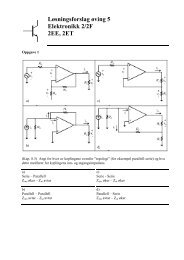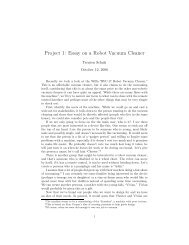The Online World resources handbook
The Online World resources handbook
The Online World resources handbook
Create successful ePaper yourself
Turn your PDF publications into a flip-book with our unique Google optimized e-Paper software.
Electronic mail, telex, and fax http://home.eunet.no/~presno/bok/7.html<br />
id ; Fri, 18 Dec 1992 12:53:24 +0100<br />
Received: by ulrik.uio.no ; Fri, 18 Dec 1992 12:53:18 +0100<br />
Date: Fri, 18 Dec 1992 12:53:18 +0100<br />
From: presno@eunet.no<br />
Message Id: <br />
To: pistserv@VM1.NODAK.EDU<br />
Subject: test<br />
index kidlink<br />
<strong>The</strong> first part of the bounced message is usually of no interest. Hidden in the second<br />
part, you will find the following interesting line:<br />
554 No such local user: PISTSERV<br />
Ah, a typo!<br />
If your original message was long, you are likely to be pleased by having the complete<br />
text returned in the third part of the bounced message. This may allow you to solve the<br />
problem with a quick cut and paste, before resending to the corrected address.<br />
<strong>The</strong> text and codes used in bounced messages vary depending on the type of<br />
mailbox system you are using, and the type of system that is bouncing your mail.<br />
Above, MAILER@VM1.NoDak.EDU returned the full text of my bounced mail.<br />
Some systems just send the beginning of your original text, while others (in particular<br />
some X.400 systems) just send a short note telling the reason for the bounce.<br />
Note: If you don't understand why a message bounces, contact your local<br />
postmaster for help. Send him a copy of the full text of the bounced<br />
message up to and including the line "Subject:" at the bottom. (<strong>The</strong>re is<br />
no need to send him the TEXT of your original message! Just the header<br />
information.)<br />
Returned due to error in contents<br />
When you write a message to a real person, you may usually write your text any way<br />
you want. However, not so when the recipient is a computer program, like a LISTSERV,<br />
or a <strong>World</strong> Wide Web by email server.<br />
Example: Often, users can fine tune the way they use electronic mailing lists by<br />
sending an email to some administering host computer. On LISTSERV based lists, the<br />
command "set kidlink index" may help fight information overload. However, the<br />
command should be written starting in your mail's line 1, column 1, If the text starts with<br />
something else, chances are that you will get an error message rather than the requested<br />
change of setup.<br />
Many users access the Internet through gateways from a company's internal mail<br />
system, and some of these mailers insist on adding extra information to the text, like in<br />
this Swedish example:<br />
Microsoft Mail v3.0 IPM.Microsoft Mail.Note<br />
Fr}n: Johan Svensson<br />
Till: TOW<br />
Ang}ende: Message headers<br />
Datum: 1994 07 23 19:39<br />
Prioritet:<br />
Brev ID: FE0257B9<br />
Konversation ID: FE0257B9<br />
If the mail system's administrator is unable or unwilling to let you send Internet mail<br />
without extra headers, then you may have problems. To get around it, check if it is<br />
possible to send your message as a file.<br />
How do I know my message is received?<br />
On some networks, it is outright impossible. On others, you can request that an<br />
automatic acknowledgement be returned, when your mail has been received.<br />
8 of 20 23.11.2009 15:45



